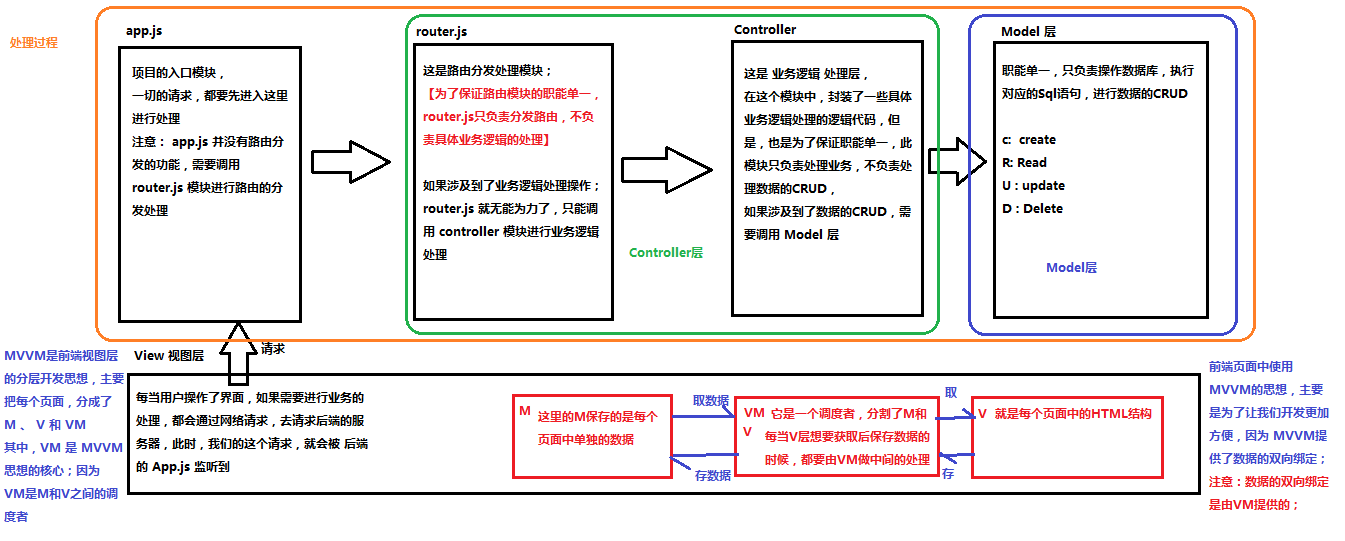后端MVC和前端MVVC关系详解
本文共 93 字,大约阅读时间需要 1 分钟。
MVC 是后端的分层开发概念; MVVM是前端视图层的概念,主要关注于 视图层分离,也就是说:MVVM把前端的视图层,分为了 三部分 Model, View , VM ViewModel

转载地址:http://tfflz.baihongyu.com/
你可能感兴趣的文章
nginx 禁止以ip形式访问服务器
查看>>
NGINX 端口负载均衡
查看>>
Nginx 结合 consul 实现动态负载均衡
查看>>
Nginx 负载均衡与权重配置解析
查看>>
Nginx 负载均衡详解
查看>>
Nginx 负载均衡配置详解
查看>>
nginx 配置 单页面应用的解决方案
查看>>
nginx 配置dist 加上跨域配置
查看>>
nginx 配置https(一)—— 自签名证书
查看>>
nginx 配置~~~本身就是一个静态资源的服务器
查看>>
Nginx 配置服务器文件上传与下载
查看>>
Nginx 配置清单(一篇够用)
查看>>
Nginx 配置解析:从基础到高级应用指南
查看>>
Nginx 集成Zipkin服务链路追踪
查看>>
nginx 集群配置方式 静态文件处理
查看>>
Nginx+Django-Python+BPMN-JS的整合工作流实战项目
查看>>
Nginx+Keepalived实现简单版高可用主备切换
查看>>
nginx+mysql+redis+mongdb+rabbitmq 自动化部署脚本
查看>>
nginx+php的搭建
查看>>
nginx+tomcat+memcached
查看>>